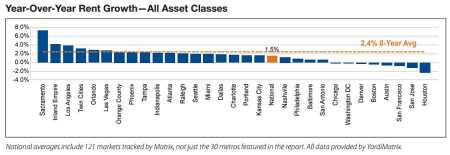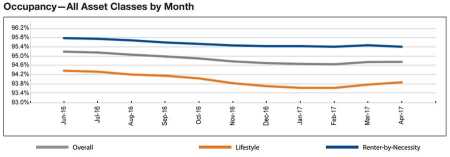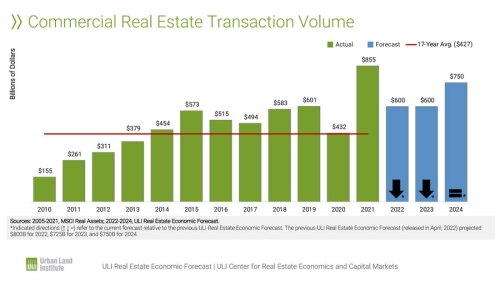U.S. multifamily rents increased in May for the third month in a row, according to Yardi Matrix’s monthly survey of 121 markets, but the rate of growth continues to decelerate. On a year-over-year basis, U.S. monthly rents were up 1.5 percent nationwide in May, down 40 basis points from April, well below the 5.3 percent growth rate of a year ago. The year-over-year growth rate has decreased for 13 straight months since peaking at 5.4 percent in April 2016. The last time the year-over-year increase was as low as 1.5 percent was in April 2011.
Driving the rent deceleration is the increase in supply nationally combined with issues that vary by market, such as slowing demand or affordability. Yardi expects 360,000 units to come online in 2017, on top of 281,000 new units in 2016. On a metro level, Sacramento (7.3 percent) continues to lead in rent growth, followed by California’s Inland Empire (4.2 percent) and Los Angeles (3.9 percent). The biggest impact of the deceleration might be the high-growth warm-weather metro areas such as Orlando (2.8 percent), Phoenix (2.3 percent), Atlanta (2.2 percent), and Dallas (1.8 percent), where demand remains healthy but rent increases are being held back by new supply.
Although the slowing rate of rent growth is not unexpected—coming as it did on the heels of several years of outsized increases—the questions facing the market now include how low the rate of growth will go and how long growth will remain in the doldrums. According to Yardi’s analysis, supply will peak in 2017, although it will remain relatively robust in 2018 and 2019.





